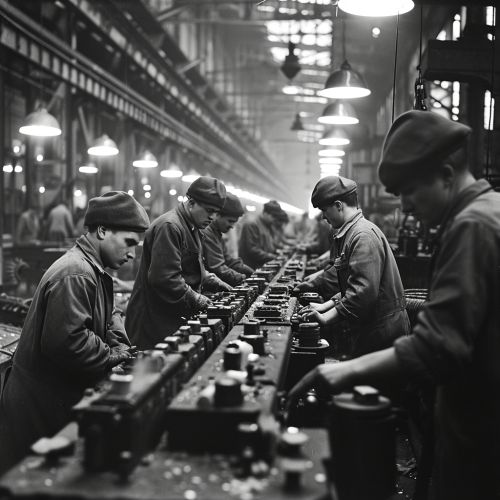History of the Soviet Union (1927–1953)
Early Stalin Era (1927–1939)
The early Stalin era, spanning from 1927 to 1939, marked the consolidation of Stalin's power and the implementation of his policies. This period was characterized by rapid industrialization, forced collectivization of agriculture, and the purges that resulted in the execution and imprisonment of millions.

Industrialization and Five-Year Plans
In 1928, the first Five-Year Plan was launched with the aim of transforming the Soviet Union from a predominantly agrarian society into a major industrial power. The plan focused on heavy industry and was financed by the state through the collectivization of agriculture. This period of rapid industrialization, known as the "Great Break", was marked by significant achievements in the development of heavy industry, but also by severe economic hardship for many Soviet citizens.
Collectivization
The policy of collectivization was implemented as part of the first Five-Year Plan. It involved the forced consolidation of individual peasant households into collective farms (kolkhozes) and state farms (sovkhozes). This policy was met with strong resistance from the peasantry, leading to widespread violence and the famine of 1932–33, which resulted in millions of deaths.
The Great Purge
The Great Purge, also known as the Great Terror, was a campaign of political repression that took place from 1936 to 1938. It involved a series of purges in which numerous people were executed, sent to labor camps, or exiled. The purges targeted a broad section of society, including Communist Party members, military leaders, and ordinary citizens, and were characterized by widespread police surveillance, suspicion of "saboteurs", "counter-revolutionaries", and widespread paranoia.
World War II (1939–1945)
The Soviet Union's involvement in World War II began in 1939 with the signing of the Molotov–Ribbentrop Pact, a non-aggression pact with Nazi Germany. However, the pact was broken when Germany invaded the Soviet Union in 1941, marking the beginning of the Eastern Front, the largest and bloodiest theatre of the war.
The Eastern Front
The Eastern Front was marked by intense combat and high casualties. The Soviet Union suffered the highest number of casualties of any country in World War II, with estimates ranging from 20 to 27 million deaths. Despite these losses, the Red Army was able to halt the German advance at the Battle of Stalingrad, a turning point in the war.
The Home Front
On the home front, the Soviet Union's economy was mobilized for war production. Women were mobilized into the workforce, and factories were relocated to the east to avoid German bombing. Despite the hardships, the Soviet Union was able to produce the tanks, planes, and guns needed to fight the war.
Post-War Stalin Era (1945–1953)
The post-war period was marked by reconstruction, political repression, and the start of the Cold War. Stalin's policies continued to shape the Soviet Union until his death in 1953.
Reconstruction
The reconstruction of the Soviet Union after World War II was a massive undertaking. The country had suffered enormous material and human losses, and many cities and towns were in ruins. Despite these challenges, the Soviet Union was able to rebuild its economy and infrastructure, largely through the efforts of its citizens and the use of forced labor.
The Cold War
The end of World War II marked the beginning of the Cold War, a period of geopolitical tension between the Soviet Union and the United States and their respective allies. The Soviet Union emerged from the war as a superpower, with influence over Eastern Europe and parts of Asia. This period was characterized by political and military tension, but also by competition in areas such as technology and ideology.
